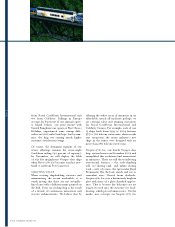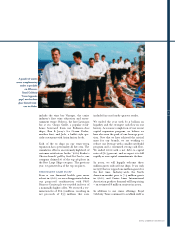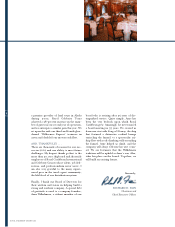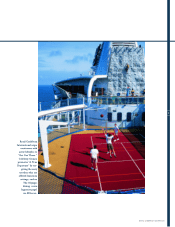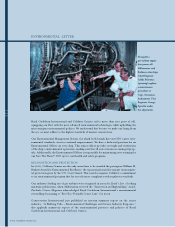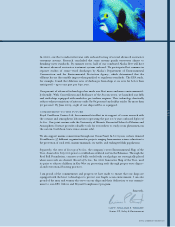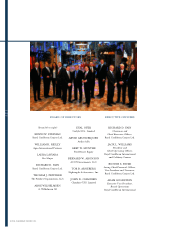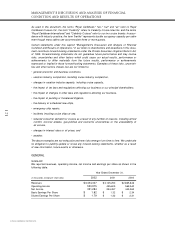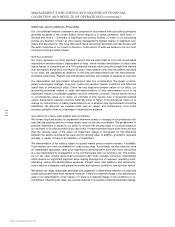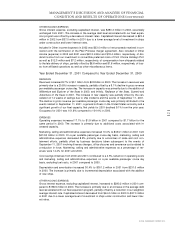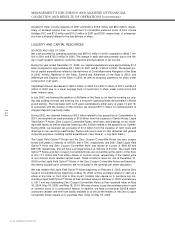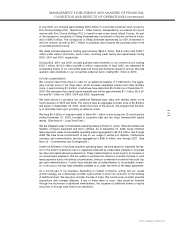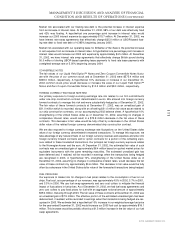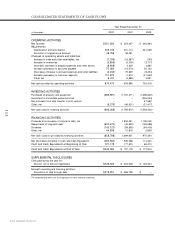Royal Caribbean Cruise Lines 2002 Annual Report Download - page 18
Download and view the complete annual report
Please find page 18 of the 2002 Royal Caribbean Cruise Lines annual report below. You can navigate through the pages in the report by either clicking on the pages listed below, or by using the keyword search tool below to find specific information within the annual report.
16
ROYAL CARIBBEAN CRUISES LTD.
MANAGEMENT'S DISCUSSION AND ANALYSIS OF FINANCIAL
CONDITION AND RESULTS OF OPERATIONS (continued)
CRITICAL ACCOUNTING POLICIES
Our consolidated financial statements are prepared in accordance with accounting principles
generally accepted in the United States, which require us to make estimates. (See Note 1 –
General and Note 2 – Summary of Significant Accounting Policies.) Certain of our accounting
policies are deemed "critical," as they require management's highest degree of judgment, esti-
mates and assumptions. We have discussed these accounting estimates and disclosures with
the audit committee of our board of directors. A discussion of what we believe to be our most
critical accounting policies follows:
SHIP ACCOUNTING
Our ships represent our most significant assets and we state them at cost less accumulated
depreciation and amortization. Depreciation of ships, which includes amortization of ships under
capital leases, is computed net of a 15% projected residual value using the straight-line method
over estimated service lives of primarily 30 years. Improvement costs that we believe add value
to our ships are capitalized as additions to the ship and depreciated over the improvements’
estimated useful lives. Repairs and maintenance activities are charged to expense as incurred.
Our depreciation and amortization assumptions take into consideration the impact of antici-
pated technological changes, long-term cruise and vacation market conditions and historical
useful lives of similarly-built ships. Given the very large and complex nature of our ships, our
accounting estimates related to ships and determinations of ship improvement costs to be
capitalized require considerable judgment and are inherently uncertain. Should certain factors
or circumstances cause us to revise our estimate of ship service lives or projected residual
values, depreciation expense could be materially lower or higher. If circumstances cause us to
change our assumptions in making determinations as to whether ship improvements should be
capitalized, the amounts we expense each year as repairs and maintenance costs could
increase, partially offset by a decrease in depreciation expense.
VALUATION OF LONG-LIVED ASSETS AND GOODWILL
We review long-lived assets for impairment whenever events or changes in circumstances indi-
cate that the carrying amount of these assets may not be fully recoverable. The assessment of
possible impairment is based on our ability to recover the carrying value of our asset based on
our estimate of its undiscounted future cash flows. If these estimated future cash flows are less
than the carrying value of the asset, an impairment charge is recognized for the difference
between the asset's estimated fair value and its carrying value. In addition, goodwill is reviewed
annually, or earlier, if there is an indication of impairment.
The determination of fair value is based on quoted market prices in active markets, if available.
Such markets are often not available for used cruise ships. Accordingly, we also base fair value
on independent appraisals, sales price negotiations and projected future cash flows discounted
at a rate determined by management to be commensurate with our business risk. The estima-
tion of fair value utilizing discounted forecasted cash flows includes numerous uncertainties
which require our significant judgment when making assumptions of revenues, operating costs,
marketing, selling and administrative expenses, interest rates, ship additions and retirements,
cruise industry competition and general economic and business conditions, among other factors.
We believe we made reasonable estimates and judgments in determining whether our long-lived
assets and goodwill have been impaired; however, if there is a material change in the assumptions
used in our determination of fair values or if there is a material change in the conditions or cir-
cumstances influencing fair value, we could be required to recognize a material impairment charge.


